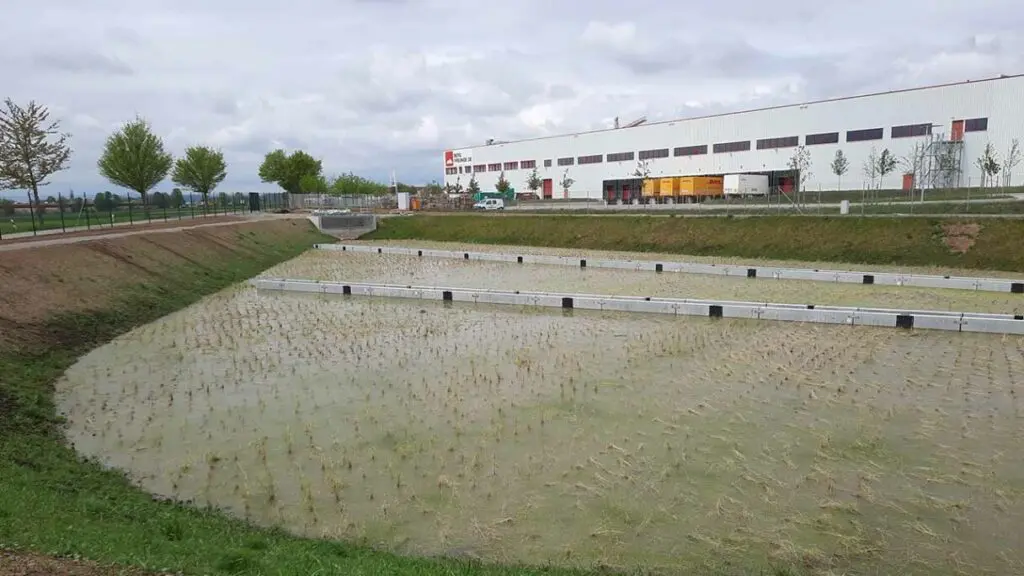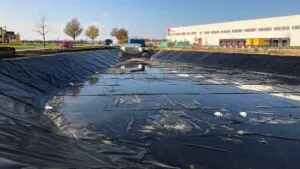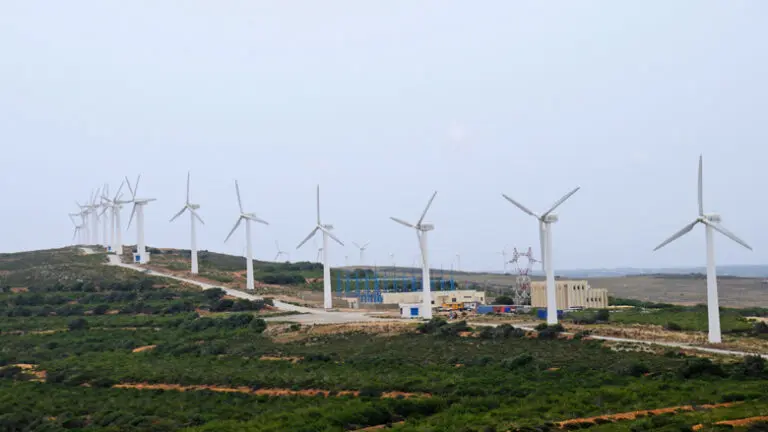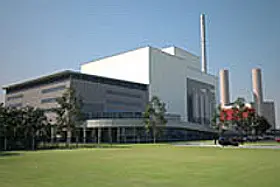Retention basins help control surface water discharge in industrial areas

In industrial areas, surface water management is an essential part of flood protection. The use of retention basins can help control the discharge of surface water and attenuate peak discharges.
Retention soil filters represent a special type of retention basin. They not only serve to manage the retained water volume but also enable natural pre-treatment of the collected surface runoff. The retention soil filter basin “Ergenzingen-Ost” is a good example of such a system. It was built by the city of Rottenburg am Neckar, Germany, for an industrial area there.
The project was planned by ISW GmbH & Co. KG., an engineering consultancy for urban water management. It included the retention soil filter basin with the upstream sedimentation basin as the first treatment stage. The innovative feature of this project was the discharge of the water through concrete channels. Which allow an even distribution of water over the entire soil filter, compared to basins with a local inlet at one edge of the basin.
In the retention soil filter, the filter stage is formed by a sand filling (70cm) with a total of 14400 pre-cultivated reed plants. The plants convert organic loads in the collected water into biomass. Below the filter layer, the biologically cleaned surface water can be collected in a drainage system with integrated pipes and discharged into the receiving water in a controlled manner. The excavation and installation of the mineral layers in the basin were carried out by Dehner & Dieringer GmbH & Co. KG.
The polymer barrier in the retention basin was an essential part of the planning
An integral part of the planning was the installation of a polymer barrier in the retention basin. This was to secure the subsoil against untreated and biologically treated surface water. In the design, a 2.0mm thick geomembrane with corresponding geotextile protective layers was specified.
Naue supplied 3750m² of Carbofol® HDPE 612 2.0 F/F HDPE geomembrane with DIBt approval and 2100m² of Secutex® protective nonwoven geotextile with a weight of 1200g/m² as the waterproofing system. Carbofol® geomembranes made of HDPE are resistant to root penetration, which is an important requirement for the sealing element when considering the reed population on the filter stage. The installation of the geosynthetics and the welding works were carried out by ENIG GmbH.
The timely implementation of the measure and the safe sealing of the basin were successfully realised. Naue geosynthetics have made a significant contribution to flood and water protection not only as proven sealing systems in the area of large flood protection facilities such as dykes, dams or flood retention basins but also as elementary components of municipal stormwater management and surface water treatment projects.
The most important success factors of the project at a glance

- Coherent planning concept
- Coordination of the earthworks and geosynthetic installation work on site
- Tested quality of the Naue geosynthetics used







